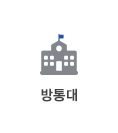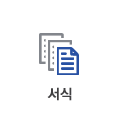본문내용
Traditions Music of Korea
Although it's been only two years since the day I reluctantly brought home my first computer, I realized last week, when it was crippled by a virus, how integral a part of my life the computer has become. I have no idea what the dictionary says about tradition or what a scholar's definition of it would be, but it seems to me that our use of the computer is, for better or for worse, the forming of a new tradition. I think of tradition as something like the air around us. Or rather, like parents for their children. One's first language is tradition. Food eaten while growing up is tradition. The ways of performing ritual are tradition. We choose friends, but not parents or what we breathe. One can choose a religion or philosophy, but not a tradition. In Korea, traditional music seems to have been forgotten by many people. I sense that this is also true in other parts of the world, but I will write only about what I know.
What little I've already learned about traditional Korean music is about playing instruments, not about history or theory. And even this experience in playing is not yet very deep. There are a number of things that come to mind when I attempt to articulate what I've noticed and absorbed about traditional music, particularly within the context of my own personal "musical world". I think first of the sound of court music. A long line of music with very little overall fluctuation of dynamics. Little sense of beginning or ending, especially in slow music with long rhythmic patterns. No exact synchronizing between players. Many people playing the same line, many subtly different lines. Instruments playing in unison, with ornaments and vibrato placed differently by each musician. Group playing that is more like layers of solo lines. Solo lines clearly heard within the color of many instruments. Vocal music that is highly ornamented and almost always melismatic. A sense of hesitation, of not always moving forward, but of lingering on certain notes. Or, repetition of short, simple figures, without hesitating, but without going. Long sections of music without any feeling of development. No transition between sections. Much very slow music. Music simply beginning and ending without big gestures. Sparse punctuation by percussion instruments. Focused, solid lines of wind music (piri) surrounded by a halo of diffused, blurred lines (taegeum, heavily ornamented). One group of instruments shadowing another group. Music of different speeds sounding simultaneously. A new phrase of music beginning before everyone has finished the old phrase.
....
Although it's been only two years since the day I reluctantly brought home my first computer, I realized last week, when it was crippled by a virus, how integral a part of my life the computer has become. I have no idea what the dictionary says about tradition or what a scholar's definition of it would be, but it seems to me that our use of the computer is, for better or for worse, the forming of a new tradition. I think of tradition as something like the air around us. Or rather, like parents for their children. One's first language is tradition. Food eaten while growing up is tradition. The ways of performing ritual are tradition. We choose friends, but not parents or what we breathe. One can choose a religion or philosophy, but not a tradition. In Korea, traditional music seems to have been forgotten by many people. I sense that this is also true in other parts of the world, but I will write only about what I know.
What little I've already learned about traditional Korean music is about playing instruments, not about history or theory. And even this experience in playing is not yet very deep. There are a number of things that come to mind when I attempt to articulate what I've noticed and absorbed about traditional music, particularly within the context of my own personal "musical world". I think first of the sound of court music. A long line of music with very little overall fluctuation of dynamics. Little sense of beginning or ending, especially in slow music with long rhythmic patterns. No exact synchronizing between players. Many people playing the same line, many subtly different lines. Instruments playing in unison, with ornaments and vibrato placed differently by each musician. Group playing that is more like layers of solo lines. Solo lines clearly heard within the color of many instruments. Vocal music that is highly ornamented and almost always melismatic. A sense of hesitation, of not always moving forward, but of lingering on certain notes. Or, repetition of short, simple figures, without hesitating, but without going. Long sections of music without any feeling of development. No transition between sections. Much very slow music. Music simply beginning and ending without big gestures. Sparse punctuation by percussion instruments. Focused, solid lines of wind music (piri) surrounded by a halo of diffused, blurred lines (taegeum, heavily ornamented). One group of instruments shadowing another group. Music of different speeds sounding simultaneously. A new phrase of music beginning before everyone has finished the old phrase.
....
추천자료
 [영작문]과학혁명의 구조
[영작문]과학혁명의 구조 포스트모던 시대의 종교교육
포스트모던 시대의 종교교육 육경(六經: Hexateuch, 창세기→여호수아)
육경(六經: Hexateuch, 창세기→여호수아) 사회자본
사회자본 모세의 야웨 종교, 그 첫 번째 영향
모세의 야웨 종교, 그 첫 번째 영향 customs vary with culture
customs vary with culture 미녀는 괴로워 영화 감상문
미녀는 괴로워 영화 감상문 topics for in-depth reading book3- 1과 word wizard,3과 the gun debate ,5과 why spy ,7과...
topics for in-depth reading book3- 1과 word wizard,3과 the gun debate ,5과 why spy ,7과... Before the Consultants Arrive
Before the Consultants Arrive 미국 대학원 기말 논문 수정 결과 (2개)
미국 대학원 기말 논문 수정 결과 (2개) 올슨의 집단행동이론[정치학]
올슨의 집단행동이론[정치학] Hebraism and Hellenism in [Dover Beach]
Hebraism and Hellenism in [Dover Beach] SM엔터테인먼트 소녀시대 마케팅성공전략분석 영문레포트
SM엔터테인먼트 소녀시대 마케팅성공전략분석 영문레포트 영어번역부탁드립니다
영어번역부탁드립니다
























